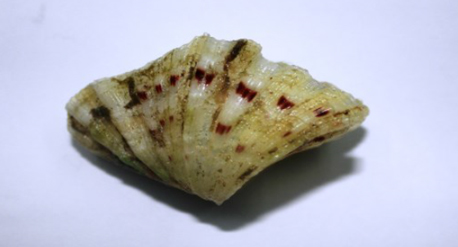VOLUME 7 NUMBER 1 (January to June 2014)

Philipp. Sci. Lett. 2014 7 (1) 187-200
available online: May 24, 2014
*Corresponding author
Email Address: mudjiesantos @yahoomail.com
Received: March 13, 2013
Revised: January 23, 2014
Accepted: April 9, 2014
ARTICLE
Updates on the status of giant clams Tridacna spp. and Hippopus hippopus in the Philippines using mitochondrial CO1 and 16S rRNA genes
¹Genetic Fingerprinting Laboratory, Marine Fisheries Research Division, National
Fisheries Research and Development Institute
²The Marine Science Institute University of the Philippines, Diliman Quezon City,
Philippines
The CO1 and 16S rRNA genes of six of the possible eight species of giant clams (Hippopus hippopus, Tridacna gigas, T. crocea, T. squamosa, T. derasa, and Tridacna sp.YCT-2005) under the Tridacnidae family found in the Philippines were sequenced for molecular approach-based species identification. We first reported here the CO1 sequence of H. hippopus and made it available online through GenBank. We also reported the first sighting of Tridacna sp. YCT-2005 in Philippine waters, an undescribed species of giant clam, which has initially been reported to be a potentially new species that was thought to be found only in Taiwan. Phylogenetic trees of CO1 and 16S rRNA gene sequences of giant clam samples from the Philippines were constructed using both the Neighbor-Joining approach and the Maximum-Likelihood approach. Both trees showed similar topology in which Tridacna and Hippopus formed two distinct clades. T. crocea, T. squamosa, T. maxima, T. costata, and Tridacna sp. YCT-2005 showed monophyletic grouping under subgenus Chametrachea confirming the recognized groupings of giant clams based on morphology. On the other hand, restriction site mapping based on the 16S rRNA gene showed a unique recognition site at 367-370 bp (5’AGCT3’) for the species of T. maxima as opposed to the species of Tridacna sp. YCT-2005. Alu I restriction endonuclease was identified as a candidate diagnostic enzyme to differentiate between these species. This study confirmed the identity of giant clams found in the Philippines using molecular techniques. The use of DNA barcoding can be a useful tool to identify different species of giant clams which is needed for their proper management and conservation in the Philippines, since they are all declared as endangered.
© 2025 SciEnggJ
Philippine-American Academy of Science and Engineering